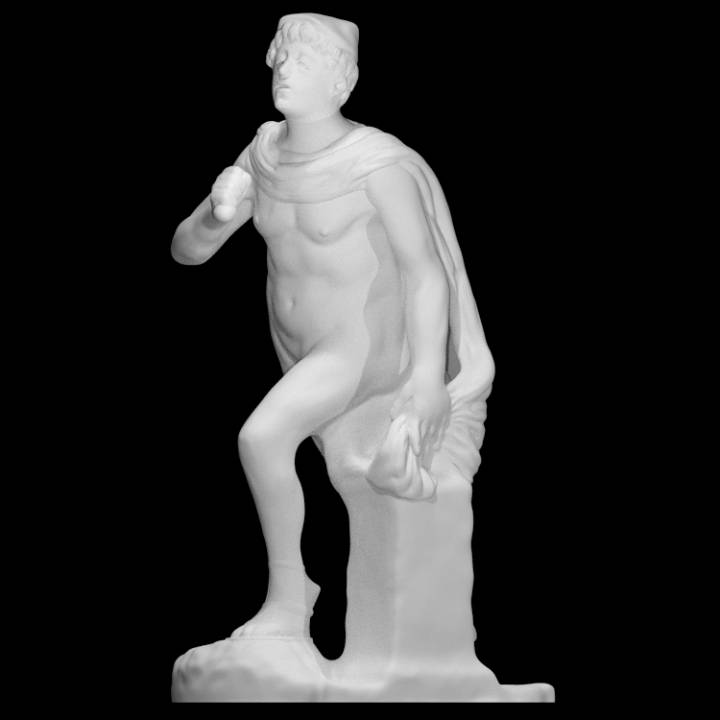
Mercury
myminifactory
The inscription declares that this figure was commissioned by the Venetian scholar Marcantonio Michiel on 14 February 1527. His horoscope for 15 June is featured on the bronze disc. With Mercury, the god of eloquence, in the ascendant, it was likely meant as a propitious omen for Michieli, who sought to secure a seat in the Venetian Senate. This is a statuette of the Roman God Mercury, carved from marble with intricate bronze details. Mercury is depicted in full-length, and is unclothed except for a cloak clasped at the right shoulder, winged sandals, and a winged helmet. The origin of this piece is Padua, crafted by Antonio Minello (1460-1533) in 1527. The bronze plaque bears an engraving of the planets, showcasing Mercury's movements, positioned at the top, along with the relative positions of the planets on 15 June 1527, the completion date of the figure. It has been interpreted as a horoscope by Hartner and Pope-Hennessy, with some variations in the precise time, which Hartner places at 8:04 a.m. and Pope-Hennessy at 11:46 a.m. Pope-Hennessy argues that this demonstrates Mercury in a particularly favorable position as Lord of the Ascendant and Midheaven, also in conjunction with the Sun and Jupiter, indicating a deliberate choice of moment with significant implications for Marcantonio Michiel's career. He attributes this to Michiel's repeated attempts to secure public office, particularly his ambition to serve as ambassador, which were thwarted in September 1525 due to a scandalous conflict with a relative that led to him being barred from holding public office for a year. By 1527, when the statuette was commissioned, Michiel had regained his eligibility and began to scheme for election to the senate, ultimately succeeding on 28 September 1527. The unusual alignment of Mercury on 15 June 1527 would have been an auspicious sign for him. This interpretation has since been questioned by Fletcher, and more recently by Eade, who has cast doubt on the astrological significance of the plaque. Observing that earlier astrological calculations were incorrect and that on 15 June 1527 Mercury was unfavorably positioned, Eade interprets the plaque as a simple astronomical diagram showing Mercury's position relative to other planets on that date. The statuette appears in the earliest inventory of Michiel's collection, probably compiled soon after his death in 1552, and by 1576 was in the possession of Michiel's grandson. As noted by Fletcher, who published the early inventory, the collection resided in Michiel's palace at Santa Marina in Venice, where the Mercury appears to have been paired with a marble Apollo of similar scale and value. It remains uncertain whether the Apollo was a classical or modern work. Pope-Hennessy speculated that the pose of the Mercury was inspired by a classical statue of Hypnos represented in the Prado Museum, of which numerous examples survive. The Madrid Hypnos was previously believed to represent Mercury. This object is part of "Scan The World," a non-profit initiative introduced by MyMiniFactory, through which we are creating a digital archive of fully 3D printable sculptures, artworks, and landmarks from across the globe for the public to access for free. Scan The World is an open-source community effort; if you have interesting items nearby and would like to contribute, email stw@myminifactory.com to learn how you can participate. This object is courtesy of the Victoria and Albert Museum in London.
With this file you will be able to print Mercury with your 3D printer. Click on the button and save the file on your computer to work, edit or customize your design. You can also find more 3D designs for printers on Mercury.
